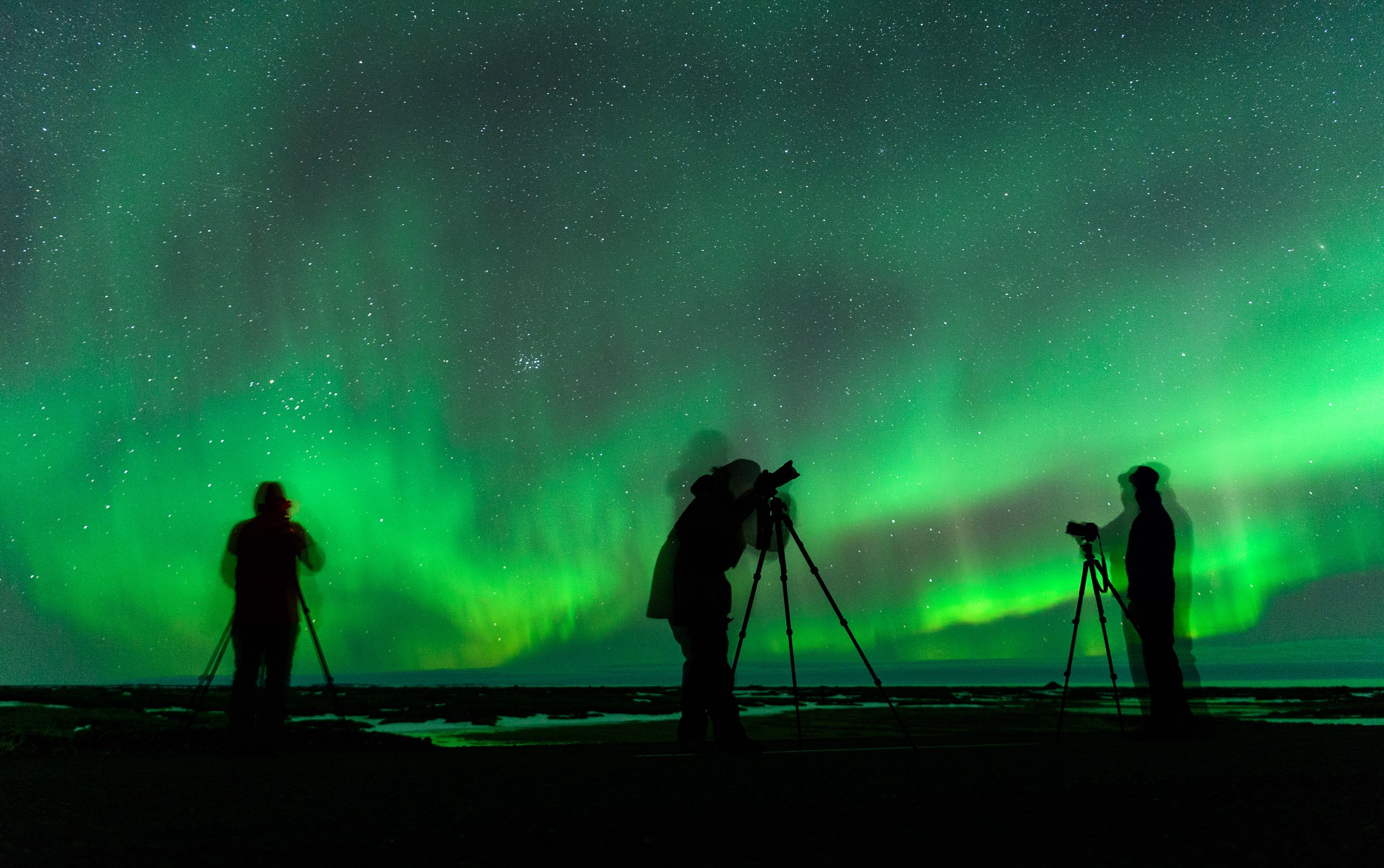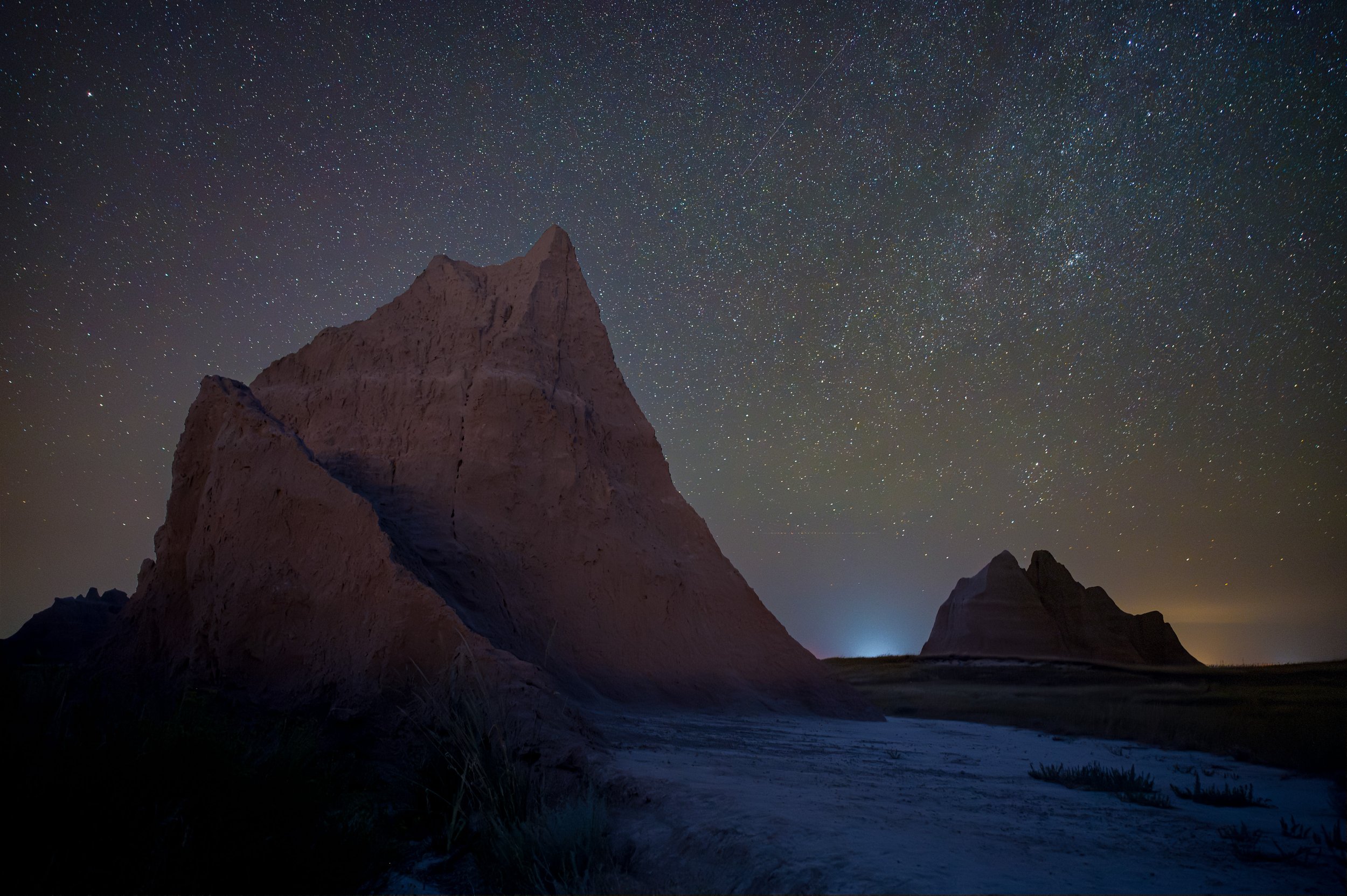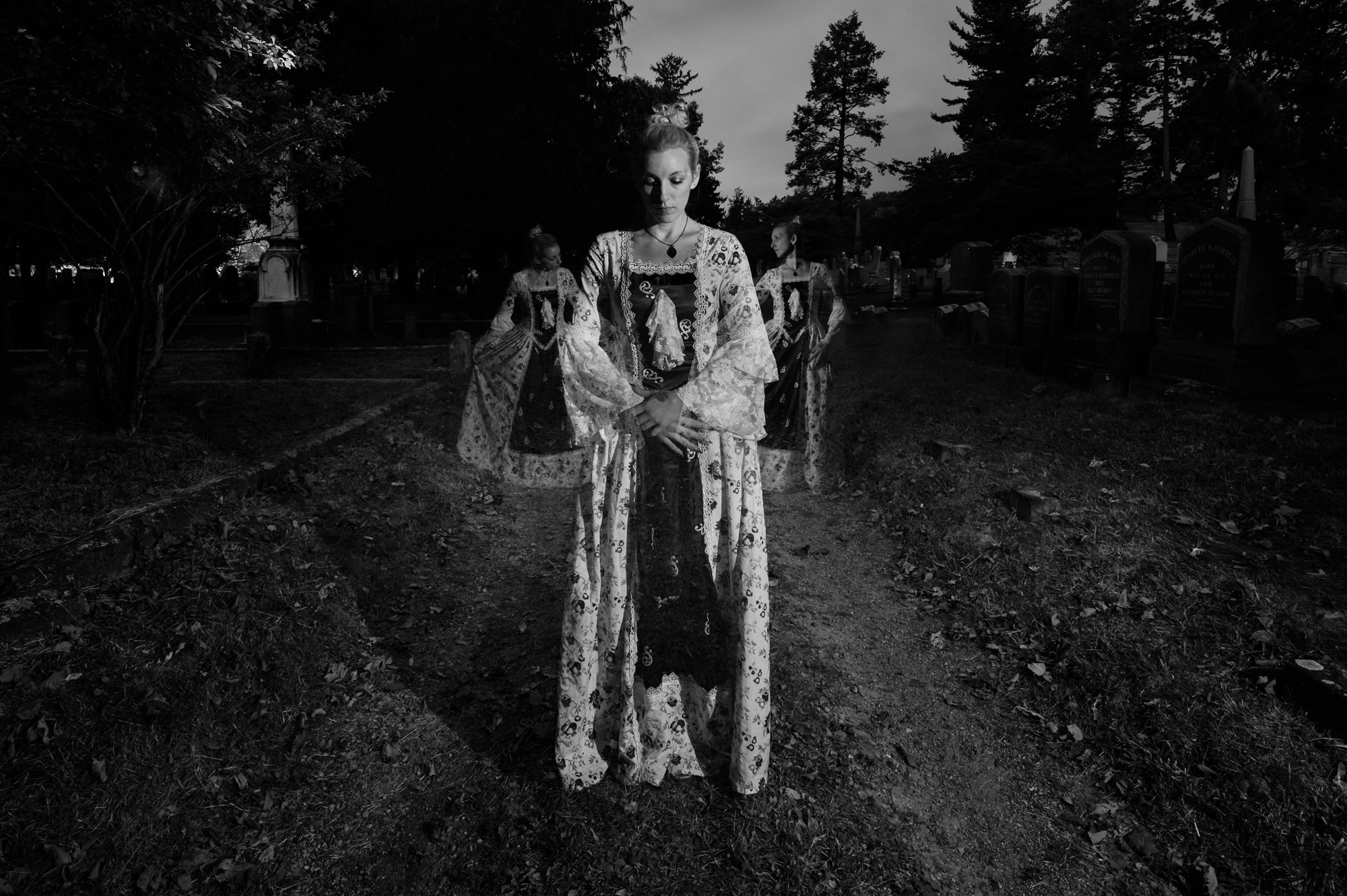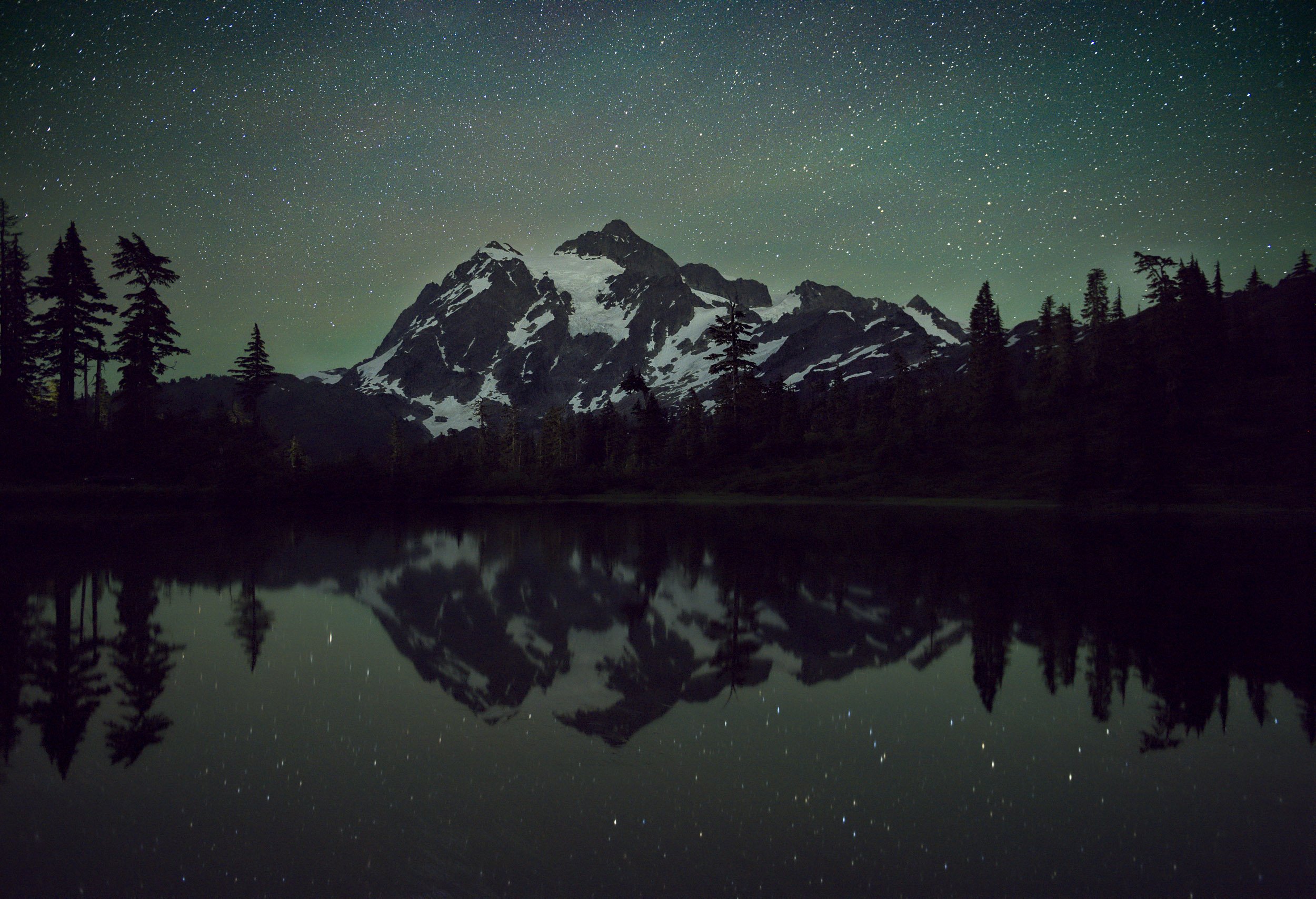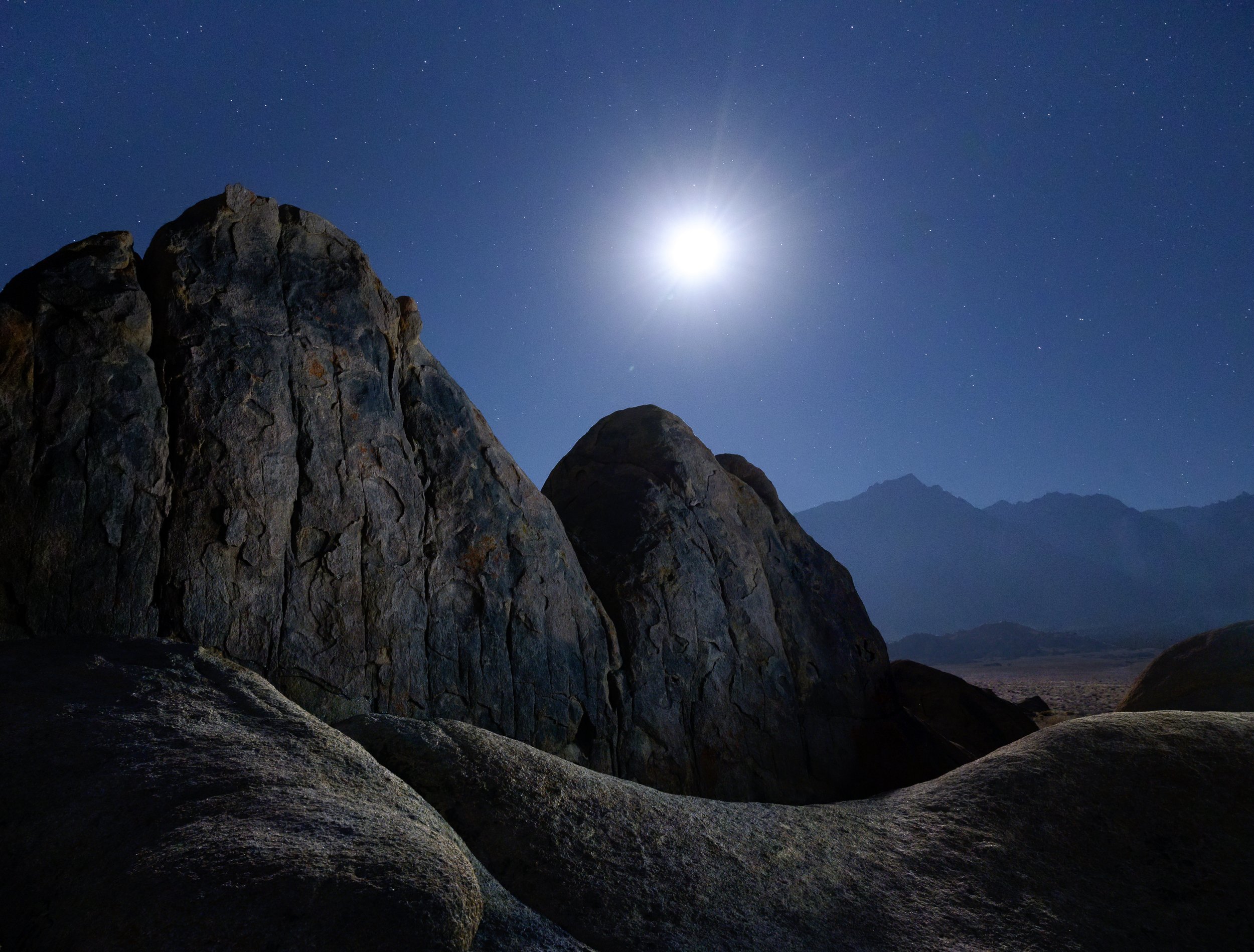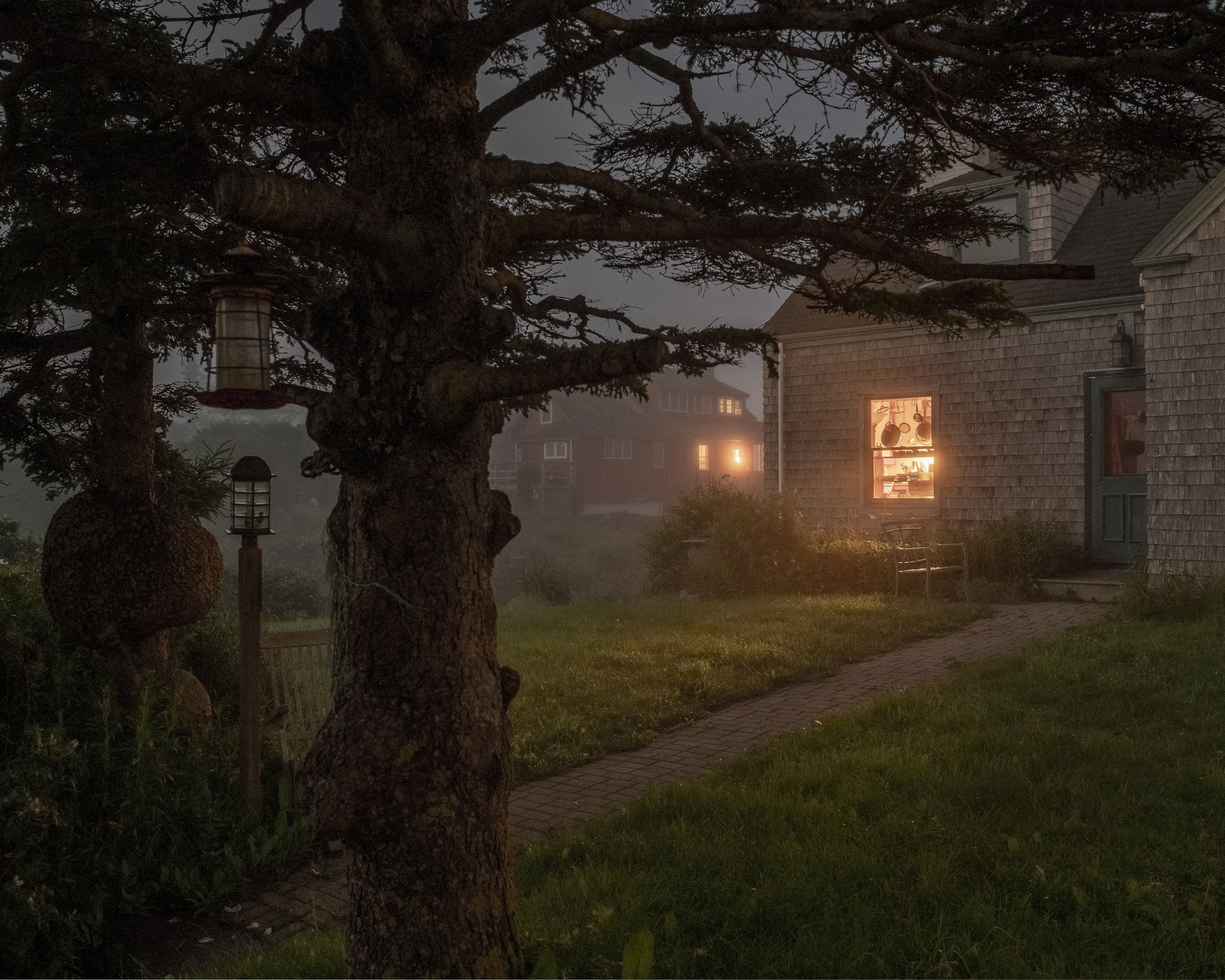How do you see the world?
Is your view wide, expansive and open, or do you like getting right into the action? Do you often look up or down on your subjects? Are you a people person or do you prefer collaborating with the trees?
The better you understand who you are and how you communicate with the world, the stronger your photographic vision will become.
When I have clear night skies and lots of stars, like on this night at Crater Lake National Park, I try to shoot as wide as possible to include as many stars as I can—in this case with a 15mm.
I’m a Pisces, a dreamer, I love to see the unseen—it excites me. Night photography is a natural fit—I can start with an idea—experiment with time and create something that makes people react. I prefer bold compositions, I often combine the night sky against man-made objects, and something that has changed from my darkroom days is that I love the many colors of the night.
But the most important thing in recent years that has helped me hone my night vision has been finding and focusing on my focal length.
We all make folders on our computers with our favorite images. If you take a little time and really study why these images resonate with you, then you’ll keep fueling the fire.
This can be done easily in the Library module of Lightroom. First, if you haven’t already, create a collection of your favorite photographs. In my example (below) I have my 5-star night shots in a collection called “Best of the Night.”
With a few keystrokes, you can easily see the data of all the images in your collection. First, press the backslash key (or select View-Show Filter Bar) to unveil the Library Filter options at the top of the Grid View.
In that bar, click “Metadata” and you’ll be able to see the dates, cameras and lenses used for the photos in that collection. Click on the upper-right hand corner to open the Library Filter presets, and select “Camera Info”—now you can see camera, lenses and exact focal lengths. This is especially helpful with zoom lenses, because Lightroom will show you the exact focal length you were zoomed to when you shot the photo.
Often the first lens new photographers choose is an all-in-one, such as a 28-200mm or 16-300mm. These are great travel lenses, as they give you a wide variety of focal lengths to choose from without the worry of changing lenses or weighing your bag down with multiple lenses. But pay attention to any trends in regards to where you might be frequently stopping with these zoom lenses. If, for example, you are always shooting your 14-24mm lens at 21mm—that is your focal length! And perhaps you should invest in a 21mm prime lens.
One of my go-to daytime/travel lens combinations is the Nikon 28-200mm lens and a Nikon 35mm f/1.4 lens. This gives me zoom versatility as well as a fast, low-light lens in one of my favorite focal lengths.
Finding a fast prime lens is very important for night photographers who want to shoot the Milky Way or dark sky, or under little to no moon. The f/2.8 zooms are nice, but gaining at least 1 stop with an f/2 lens or 2 stops with an f/1.4 lens will let you use cleaner ISOs such as 3200 or 1600. On our recent workshop in Acadia, I was able to try out the Nikon 20mm f/1.8 lens, which is a very nice, compact and fast lens that I’ll be adding to my arsenal.
Once you find your focal length—own it. I used to be a 50mm guy but over the last two years I’ve found myself reaching for the 35mm more and more. When you become comfortable with how you see the world—challenge it. I often default to shooting super-wide at night, but I’m trying to look for more detail images that a 35mm, 50mm or even a 100mm will help me achieve.
I was scouting with my 28-200mm lens during the day in Crater Lake National Park and zoomed in to 100mm to frame this shot.
So take some time, really get to know your work, find your focal length, and most of all—keep on clicking!
For more information about the equipment mentioned in this post, see the Our Gear page and the following links:




